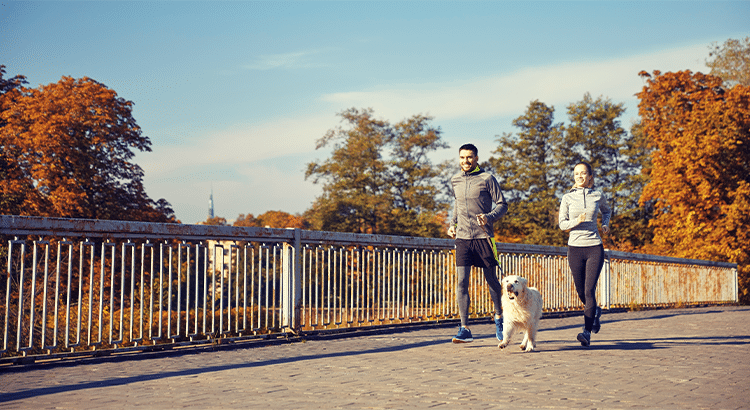
The Heat Hazard
Summer is a fantastic time for outdoor activities, but it’s also a season that brings unique challenges for dog owners. One of the most overlooked dangers is hot concrete. As temperatures rise, concrete and asphalt can become scorching hot, posing significant risks to your dog’s sensitive paws. Understanding these dangers and taking appropriate precautions can ensure your furry friend stays safe and comfortable during your summer strolls.
Why Hot Concrete is a Problem
Concrete and asphalt absorb heat quickly and can reach temperatures much higher than the air. On a sunny day, pavement temperatures can soar above 140°F (60°C), which is hot enough to cause burns in a matter of seconds. Dogs, unlike humans, are directly in contact with the ground and have limited ways to cool their body, making them particularly vulnerable to this heat.
Learn more about just how hot concrete can get: Climate Science
Signs of Paw Burns
Recognizing the signs of paw burns is crucial for any dog owners. Symptoms to watch for include:
- Limping or reluctance to walk
- Licking or chewing at the paw
- Redness or darkening of the pads
- Blisters or visible damage to the paw pads
- Whining or whimpering during or after walks
If you notice any of these signs, it’s important to take immediate action and seek veterinary care if necessary.
Preventative Measures
- Time Your Walks: The best way to avoid hot concrete is by timing your walks during the cooler parts of the day. Early mornings or late evenings are ideal times when the pavement is cooler.
- Test the Pavement: A simple way to check if the pavement is too hot by using the “seven-second test”. Place the back of your hand on the pavement. If you can’t hold it there comfortably for seven seconds, it’s too hot for your dog’s paw.
- Use Protective Gear: Dog booties or paw wax can provide a protective barrier between your dog’s paws and the hot pavement. While booties might take some getting used to, they can significantly reduce the risk of burns.
- Walk on Grass: Whenever possible, opt for grassy areas or dirt paths instead of concrete. These surfaces are much cooler or gentler on your dog’s paws.
- Stay Hydrated: Always carry water for your dog and take frequent breaks in shaded areas to prevent overheating.
Emergency Care for Paw Burns
In case your dog does suffer from paw burns, it’s essential to know how to provide immediate care. Rinse the affected paws with cool water and avoid using ice, as it can cause further damage. Keep your dog off hot surfaces and consult your veterinarian for appropriate treatment.
Safety First
Summer walks can be enjoyable and safe with a few precautions. By understanding the risks of hot concrete and taking steps to protect your dog’s paws, you can ensure that your furry companion stays healthy and happy all season long. Always prioritize your dog’s comfort and well-being to make the most of your summer adventures together.
Pin Paws offers two membership levels that include access to Wigglepon, a pet-centric site with discounts on products to keep your pet hydrated and their paws safe all summer long. Click here to learn more: Pin Paws
Table of content
Related articles

The Heat Hazard
Summer is a fantastic time for outdoor activities, but it’s also a season that brings unique challenges for dog owners. One of the most overlooked dangers is hot concrete. As temperatures rise, concrete and asphalt can become scorching hot, posing significant risks to your dog’s sensitive paws. Understanding these dangers and taking appropriate precautions can ensure your furry friend stays safe and comfortable during your summer strolls.
Why Hot Concrete is a Problem
Concrete and asphalt absorb heat quickly and can reach temperatures much higher than the air. On a sunny day, pavement temperatures can soar above 140°F (60°C), which is hot enough to cause burns in a matter of seconds. Dogs, unlike humans, are directly in contact with the ground and have limited ways to cool their body, making them particularly vulnerable to this heat.
Learn more about just how hot concrete can get: Climate Science
Signs of Paw Burns
Recognizing the signs of paw burns is crucial for any dog owners. Symptoms to watch for include:
- Limping or reluctance to walk
- Licking or chewing at the paw
- Redness or darkening of the pads
- Blisters or visible damage to the paw pads
- Whining or whimpering during or after walks
If you notice any of these signs, it’s important to take immediate action and seek veterinary care if necessary.
Preventative Measures
- Time Your Walks: The best way to avoid hot concrete is by timing your walks during the cooler parts of the day. Early mornings or late evenings are ideal times when the pavement is cooler.
- Test the Pavement: A simple way to check if the pavement is too hot by using the “seven-second test”. Place the back of your hand on the pavement. If you can’t hold it there comfortably for seven seconds, it’s too hot for your dog’s paw.
- Use Protective Gear: Dog booties or paw wax can provide a protective barrier between your dog’s paws and the hot pavement. While booties might take some getting used to, they can significantly reduce the risk of burns.
- Walk on Grass: Whenever possible, opt for grassy areas or dirt paths instead of concrete. These surfaces are much cooler or gentler on your dog’s paws.
- Stay Hydrated: Always carry water for your dog and take frequent breaks in shaded areas to prevent overheating.
Emergency Care for Paw Burns
In case your dog does suffer from paw burns, it’s essential to know how to provide immediate care. Rinse the affected paws with cool water and avoid using ice, as it can cause further damage. Keep your dog off hot surfaces and consult your veterinarian for appropriate treatment.
Safety First
Summer walks can be enjoyable and safe with a few precautions. By understanding the risks of hot concrete and taking steps to protect your dog’s paws, you can ensure that your furry companion stays healthy and happy all season long. Always prioritize your dog’s comfort and well-being to make the most of your summer adventures together.
Pin Paws offers two membership levels that include access to Wigglepon, a pet-centric site with discounts on products to keep your pet hydrated and their paws safe all summer long. Click here to learn more: Pin Paws

The Heat Hazard
Summer is a fantastic time for outdoor activities, but it’s also a season that brings unique challenges for dog owners. One of the most overlooked dangers is hot concrete. As temperatures rise, concrete and asphalt can become scorching hot, posing significant risks to your dog’s sensitive paws. Understanding these dangers and taking appropriate precautions can ensure your furry friend stays safe and comfortable during your summer strolls.
Why Hot Concrete is a Problem
Concrete and asphalt absorb heat quickly and can reach temperatures much higher than the air. On a sunny day, pavement temperatures can soar above 140°F (60°C), which is hot enough to cause burns in a matter of seconds. Dogs, unlike humans, are directly in contact with the ground and have limited ways to cool their body, making them particularly vulnerable to this heat.
Learn more about just how hot concrete can get: Climate Science
Signs of Paw Burns
Recognizing the signs of paw burns is crucial for any dog owners. Symptoms to watch for include:
- Limping or reluctance to walk
- Licking or chewing at the paw
- Redness or darkening of the pads
- Blisters or visible damage to the paw pads
- Whining or whimpering during or after walks
If you notice any of these signs, it’s important to take immediate action and seek veterinary care if necessary.
Preventative Measures
- Time Your Walks: The best way to avoid hot concrete is by timing your walks during the cooler parts of the day. Early mornings or late evenings are ideal times when the pavement is cooler.
- Test the Pavement: A simple way to check if the pavement is too hot by using the “seven-second test”. Place the back of your hand on the pavement. If you can’t hold it there comfortably for seven seconds, it’s too hot for your dog’s paw.
- Use Protective Gear: Dog booties or paw wax can provide a protective barrier between your dog’s paws and the hot pavement. While booties might take some getting used to, they can significantly reduce the risk of burns.
- Walk on Grass: Whenever possible, opt for grassy areas or dirt paths instead of concrete. These surfaces are much cooler or gentler on your dog’s paws.
- Stay Hydrated: Always carry water for your dog and take frequent breaks in shaded areas to prevent overheating.
Emergency Care for Paw Burns
In case your dog does suffer from paw burns, it’s essential to know how to provide immediate care. Rinse the affected paws with cool water and avoid using ice, as it can cause further damage. Keep your dog off hot surfaces and consult your veterinarian for appropriate treatment.
Safety First
Summer walks can be enjoyable and safe with a few precautions. By understanding the risks of hot concrete and taking steps to protect your dog’s paws, you can ensure that your furry companion stays healthy and happy all season long. Always prioritize your dog’s comfort and well-being to make the most of your summer adventures together.
Pin Paws offers two membership levels that include access to Wigglepon, a pet-centric site with discounts on products to keep your pet hydrated and their paws safe all summer long. Click here to learn more: Pin Paws



